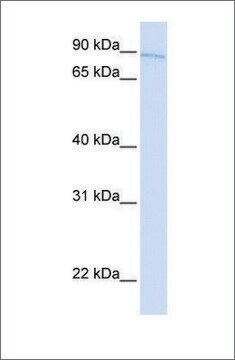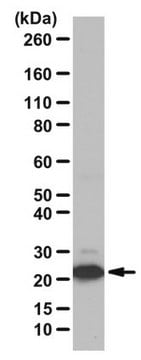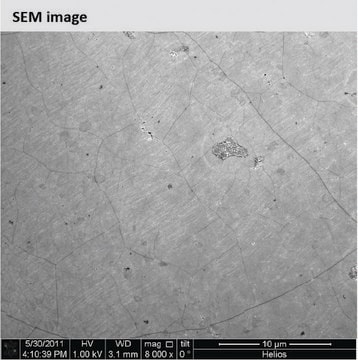07-1217
Anti-PP1β Antibody
Upstate®, from rabbit
Synonym(s):
Serine/threonine-protein phosphatase PP1-beta catalytic subunit, Protein phosphatase 1, catalytic subunit, beta, Protein phosphatase 1, catalytic subunit, beta isoform, Protein phosphatase 1-beta, Protein phosphatase 1-delta
About This Item
Recommended Products
biological source
rabbit
Quality Level
antibody form
purified immunoglobulin
antibody product type
primary antibodies
clone
polyclonal
species reactivity
bovine, mouse, human, rat
manufacturer/tradename
Upstate®
technique(s)
immunohistochemistry: suitable (paraffin)
immunoprecipitation (IP): suitable
western blot: suitable
isotype
IgG
NCBI accession no.
UniProt accession no.
shipped in
wet ice
target post-translational modification
unmodified
Gene Information
human ... PPP1CB(5500)
General description
Specificity
Immunogen
Application
Immunohistochemistry(paraffin):
Optimal Staining of PP1beta Polyclonal Antibody: Human Testis PP1beta staining in normal human testis, tissue pretreated with citrate buffer, pH 6.0. A previous lot of this antibody was diluted to 1:100, using IHC-Select detection with HRP-DAB.
Signaling
Kinases & Phosphatases
Quality
Western Blot Analysis: 1:500 dilution of this lot detected PP-1beta on 10 μg of HeLa lysates.
Target description
Linkage
Physical form
Storage and Stability
Handling Recommendations: Upon first thaw, and prior to removing the cap, centrifuge the vial and gently mix the solution. Aliquot into microcentrifuge tubes and store at -20°C. Avoid repeated freeze/thaw cycles, which may damage IgG and affect product performance.
Analysis Note
HeLa Cell Lysate
Other Notes
Legal Information
Disclaimer
Not finding the right product?
Try our Product Selector Tool.
Storage Class Code
10 - Combustible liquids
WGK
WGK 2
Flash Point(F)
Not applicable
Flash Point(C)
Not applicable
Certificates of Analysis (COA)
Search for Certificates of Analysis (COA) by entering the products Lot/Batch Number. Lot and Batch Numbers can be found on a product’s label following the words ‘Lot’ or ‘Batch’.
Already Own This Product?
Find documentation for the products that you have recently purchased in the Document Library.
Our team of scientists has experience in all areas of research including Life Science, Material Science, Chemical Synthesis, Chromatography, Analytical and many others.
Contact Technical Service








